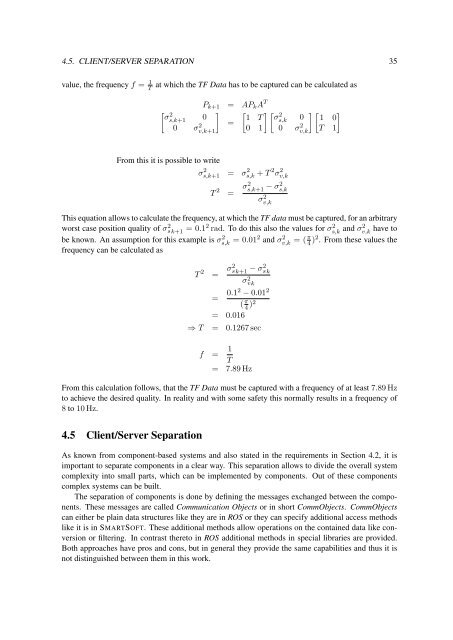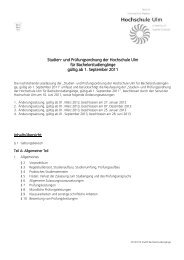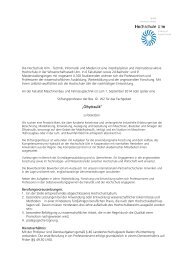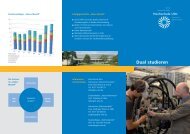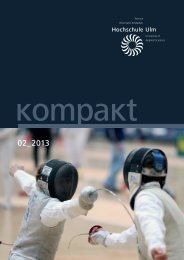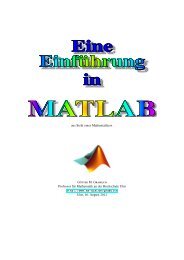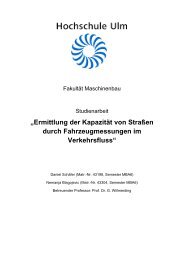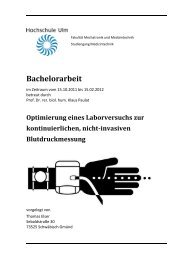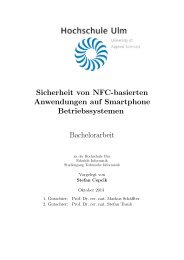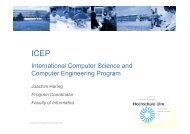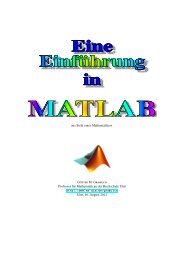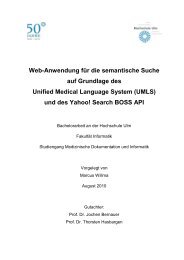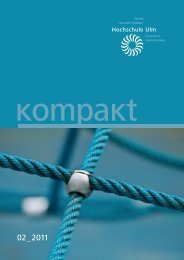PDF 1.938kB
PDF 1.938kB
PDF 1.938kB
Create successful ePaper yourself
Turn your PDF publications into a flip-book with our unique Google optimized e-Paper software.
4.5. CLIENT/SERVER SEPARATION 35<br />
value, the frequency f = 1 T<br />
at which the TF Data has to be captured can be calculated as<br />
P k+1 = AP k A T<br />
[ σ<br />
2<br />
] [ ] [<br />
s,k+1<br />
0 1 T σ<br />
2<br />
] [ ]<br />
0 σv,k+1<br />
2 =<br />
s,k<br />
0 1 0<br />
0 1 0 σv,k<br />
2 T 1<br />
From this it is possible to write<br />
σ 2 s,k+1 = σ 2 s,k + T 2 σ 2 v,k<br />
T 2 = σ2 s,k+1 − σ2 s,k<br />
σ 2 v,k<br />
This equation allows to calculate the frequency, at which the TF data must be captured, for an arbitrary<br />
worst case position quality of σ 2 sk+1 = 0.12 rad. To do this also the values for σs,k 2 and σ2 v,k<br />
have to<br />
be known. An assumption for this example is σs,k 2 = 0.012 and σv,k 2 = ( π 4 )2 . From these values the<br />
frequency can be calculated as<br />
T 2 = σ2 sk+1 − σ2 sk<br />
σ 2 vk<br />
= 0.12 − 0.01 2<br />
( π 4 )2<br />
= 0.016<br />
⇒ T = 0.1267 sec<br />
f = 1 T<br />
= 7.89 Hz<br />
From this calculation follows, that the TF Data must be captured with a frequency of at least 7.89 Hz<br />
to achieve the desired quality. In reality and with some safety this normally results in a frequency of<br />
8 to 10 Hz.<br />
4.5 Client/Server Separation<br />
As known from component-based systems and also stated in the requirements in Section 4.2, it is<br />
important to separate components in a clear way. This separation allows to divide the overall system<br />
complexity into small parts, which can be implemented by components. Out of these components<br />
complex systems can be built.<br />
The separation of components is done by defining the messages exchanged between the components.<br />
These messages are called Communication Objects or in short CommObjects. CommObjects<br />
can either be plain data structures like they are in ROS or they can specify additional access methods<br />
like it is in SMARTSOFT. These additional methods allow operations on the contained data like conversion<br />
or filtering. In contrast thereto in ROS additional methods in special libraries are provided.<br />
Both approaches have pros and cons, but in general they provide the same capabilities and thus it is<br />
not distinguished between them in this work.


